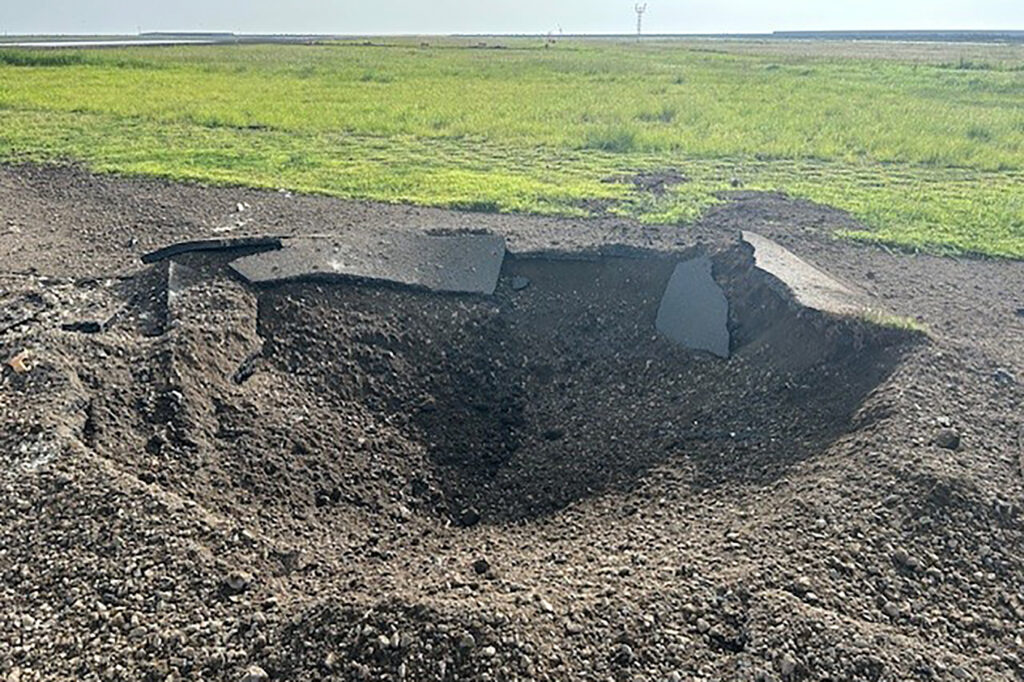
- ARAB NEWS
- 31 Jul 2025

TOKYO: The US-made wartime bomb that unexpectedly detonated at Miyazaki Airport, southwestern Japan, in October 2024 likely contained a timed detonator designed to delay the fuse’s activation, according to a Defense Ministry investigation.
Experts have identified the bomb as one of the explosives dropped by US forces during World War II. The bombs employed chemical reactions to activate their fuses and were intended to temporarily disable bases used by the Imperial Japanese military for suicide attack missions.
Ahead of next summer’s 80th anniversary of the end of the war, the blast serves as a sobering reminder of the lingering legacy of wartime US air raids on Japan.
The explosion occurred just before 8 a.m. on Oct. 2 at airport, in the city of Miyazaki. A 500-pound bombshell, buried beneath the ground, detonated spontaneously, creating a crater about 7 meters long, 4 meters wide and 1 meter deep near a taxiway. Four planes had used the taxiway for takeoffs shortly before the blast.
Later that day, the Ground Self-Defense Force’s unexploded ordnance disposal unit from Camp Metabaru in Saga Prefecture was dispatched to the site, recovering several fragments of the bomb. Among the recovered pieces, investigators identified what appeared to be a timed detonator, commonly referred to as a “time-delay fuse,” embedded in a fragment from the bomb’s base.
Weapons experts and researchers specializing in wartime air raid records noted that timed 500-pound conventional bombs were deployed by US B-29 bombers and other aircraft in the Kyushu region, including Miyazaki, as well as in other areas such as the Kanto region in eastern Japan.
The time-delay fuse features a propeller-like blade at its tip, which rotates as the bomb falls, driving a screw-type shaft downward, experts and researchers explained. This motion is designed to crush an ampule containing an organic solvent. The solvent then leaks out and dissolves a celluloid stopper shaped like a plate. Once the stopper is compromised, a spring-loaded detonator needle is released, striking the detonating primer.
The timing of the explosion could be adjusted to occur anywhere from one hour to several days after impact, primarily by modifications to the thickness of the celluloid stopper. Still, because the explosion relied on the chemical reaction of the liquid solvent, the actual detonation timing often varied from expectations, influenced by ambient temperature.
Originally constructed in 1943 as Akae airfield for the Imperial Japanese Navy, Miyazaki Airport served as a base for suicide attack missions during the Battle of Okinawa. The battle began with the US forces’ landing on the Kerama Islands on March 26, 1945. The airfield became a repeated target of US air raids following the first attack on March 18 that year.
On the rationale behind the use of timed bombs, Tatsuya Yamamoto, a researcher specializing in wartime weapons, suggested that they were intended to disrupt the operations of suicide attack bases. “Because it was impossible to predict when the bombs would detonate after landing, they are believed to have not only hindered recovery efforts (from air raid damage) but also imposed psychological pressure,” he said.
The reason the bomb at Miyazaki Airport exploded 79 years after being dropped remains unknown, Yamamoto said. “One possibility is that a cracked ampule was further damaged by some kind of vibration. It’s difficult, however, to determine at what stage the detonation process had stalled or what ultimately triggered it to restart,” he noted.
After the recent explosion, the transport ministry has decided to conduct underground magnetic surveys at Miyazaki Airport, as well as Sendai, Matsuyama, Fukuoka and Naha airports, aiming to identify any remaining dud shells. Unexploded ordnance has previously been discovered at these locations.
JIJI Press